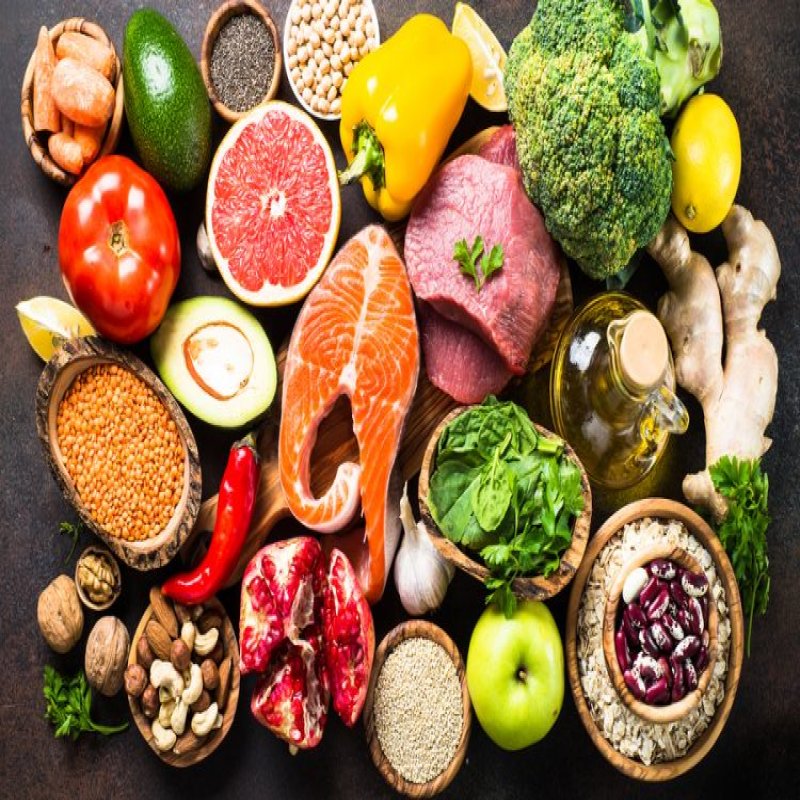
Proteins are important for a healthy and balanced diet. Proteins are also important for almost all biological processes in our body, and they comprise amino acids. But why do you need amino acids? Why should you care? We answer these questions and much more.
Read on!
The proteins that we consume in our diet are broken down into smaller units known as amino acids. Amino acids are the Lego bricks of the biological system. Different amino acids chemically associate with each other to form proteins. Even our body arranges amino acids in many combinations to make thousands of different proteins from just 21 amino acids.
Amino Acids: A Brief Introduction
A human body can take apart the amino acid building blocks that make up a certain protein and reuse these to make new, different proteins. Even your body knows how to recycle; isn’t that cool? Amino acids join to form short polymer chains called peptides or longer chains called either polypeptides or proteins. Amino acids are an important pillar of metabolic processes occurring in our body. The majority of diseases affecting us can be linked to certain metabolic disruptions.
Essential Amino Acids
21 amino acids make up all the proteins in our body. These amino acids can be classified into two groups: “essential amino acids” and “non-essential amino acids." Essential amino acids are amino acids that cannot be synthesized by the human body and therefore should be present in our day-to-day diet. There are nine amino acids that the human body cannot produce and are thus referred to as "essential." These are phenylalanine, threonine, valine, tryptophan, methionine, leucine, isoleucine, lysine, and histidine. Proteins that contain all nine “essential” amino acids are called complete proteins, whereas others are called incomplete proteins.

Let’s find out how these essential amino acids affect our health and why are they so important.
Phenylalanine
It is an important amino acid as it has analgesic and antidepressant actions, and is present in breast milk. Foods containing phenylalanine are milk, eggs, chicken, beef, liver, and beans.

Threonine
Threonine plays a critical role in the maintenance and growth of the intestinal mucous membrane. It also helps to treat various nervous system disorders, including spinal spasticity, multiple sclerosis, and ALS (Amyotrophic Lateral Sclerosis). Foods containing threonine are cottage cheese, poultry, fish, meat, lentils, black turtle beans, and sesame seeds.

Valine
Valine is an important source of nitrogen, and it helps in tissue repair and immune system regulation. A protein-restricted diet can reduce valine blood levels and decrease fasting blood glucose levels. Important sources of valine are meats, soy products, beans, and legumes.

Tryptophan
Tryptophan is a precursor to the neurotransmitter serotonin and the hormone melatonin. Serotonin is considered to be the body’s natural mood stabilizer and has various functions across the body. Melatonin regulates the body’s sleep-wake cycles. Tryptophan intake can help cure sleep disorders, anxiety, and headaches. It also reduces stress by increasing serotonin levels in the blood and helps to maintain a healthy weight. Some tryptophan-rich foods are eggs, bananas, raw dairy products, whole grains, beans, legumes, etc.

Methionine
Methionine helps in the growth of new blood vessels. It acts as a precursor to carnitine (a substance that helps convert fats into energy) and also helps the liver with inefficient fat processing. The main sources of methionine are fish, meats, eggs, sesame seeds, and other plant seeds. Methionine consumption should be monitored carefully, as overconsumption can lead to cancerous growth.

Leucine
Leucine intake in diets enhances muscle growth, stabilizes blood sugar levels, enhances muscle strength, and controls muscle wasting in older individuals. Some leucine-rich foods are cheese, chicken, parsley, peanuts, fish, and other seafood.

Isoleucine
Isoleucine promotes the synthesis of hemoglobin and other essential proteins, the detoxification of nitrogen wastes, and wound healing. Its deficiency can cause vision disturbances, dermatitis, and diarrhea. Some isoleucine-rich foods are fish, meats, legumes, seeds, and many more.

Lysine
Lysine is important for the synthesis of collagen (a protein), carnitine, and other proteins. It also helps with calcium absorption. Lysine deficiency can cause symptoms like nausea, agitation, fatigue, anemia, and even impaired growth. Some lysine-rich foods are lentils, spinach, poultry, green beans, and nuts.
Histidine
Histidine can help in curing rheumatoid arthritis, ulcers, anemia, and other allergic diseases. It helps in the synthesis of hemoglobin, tissue repair, and strengthening of the immune system. It is the building block of many iron-containing compounds, such as ferritin. Lack of this amino acid can lead to slower healing of wounds, impaired growth, and skin inflammation. Some foods rich in histidine are legumes, salmon, soybeans, chicken, pork, beef, and cheese.

We saw how important these essential amino acids are for our health. Complete proteins provide the body with all these amino acids. Animal proteins, such as meat, poultry, fish, seafood, and eggs, are generally considered complete proteins. For vegetarians, milk and milk products such as yogurt and cheese, as well as non-dairy milk substitutes such as soy milk, are good sources of complete proteins. Moreover, mixing and combining multiple incomplete proteins can also meet the body’s daily essential amino acid requirements.
But the story does not end here. Despite their name, non-essential amino acids also have a variety of important roles in the human body. Did you know that one non-essential amino acid also functions as a neurotransmitter, which has critical roles in memory, learning, and even intelligence?


.png)


